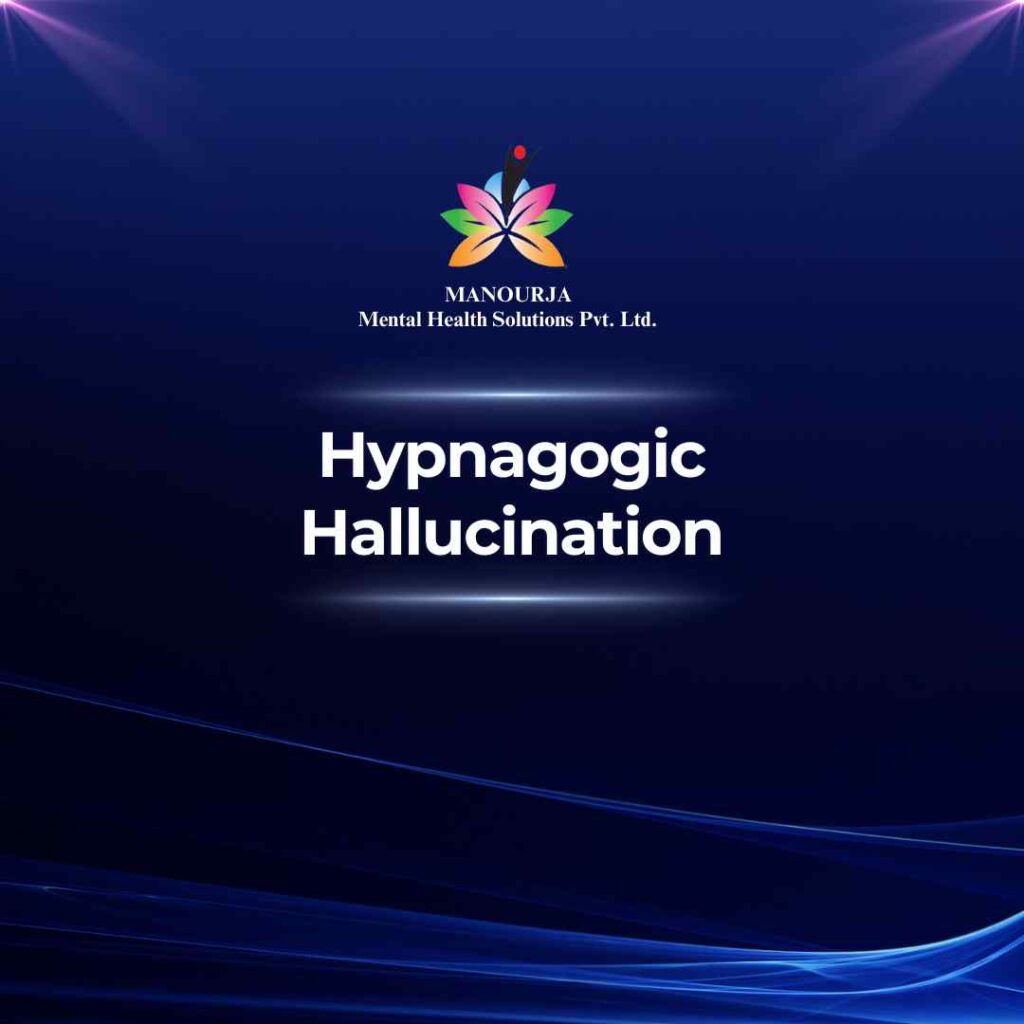Hypnagogic Hallucinations

Hypnagogic hallucinations are vivid, dream-like experiences that occur while transitioning from wakefulness to sleep. These hallucinations can be unsettling and often involve sensory perceptions that feel real but occur without any external stimuli.
Signs and Symptoms in Mental Illness
Hypnagogic hallucinations are commonly associated with several mental health conditions, including:
- Sleep Disorders: They frequently occur in individuals with narcolepsy, a neurological disorder characterized by sudden and uncontrollable episodes of sleep during the day. Hypnagogic hallucinations may accompany sleep paralysis and cataplexy, which are also symptoms of narcolepsy.
- Psychotic Disorders: In some cases, hypnagogic hallucinations can be a precursor or symptom of psychotic disorders such as schizophrenia. These hallucinations may involve seeing, hearing, or feeling things that are not real, and they can occur during the transition to sleep or wakefulness.
- Post-Traumatic Stress Disorder (PTSD): Individuals with PTSD may experience hypnagogic hallucinations as a result of trauma-related nightmares or flashbacks. These hallucinations can intensify during periods of heightened stress or anxiety.
- Other Sleep Disorders: Besides narcolepsy, hypnagogic hallucinations can occur in other sleep disorders such as REM sleep behavior disorder (RBD) and sleep paralysis. They are often accompanied by disrupted sleep patterns and can contribute to excessive daytime sleepiness and fatigue.
Treatment and Management
Managing hypnagogic hallucinations focuses on addressing the underlying condition and improving sleep hygiene:
- Medication: Depending on the specific diagnosis, medications such as antidepressants, stimulants (for narcolepsy), or antipsychotics may be prescribed to manage symptoms and improve sleep quality.
- Therapy: Cognitive behavioral therapy (CBT) and other psychotherapeutic approaches can help individuals cope with hallucinations and manage stress and anxiety associated with sleep disturbances.
- Sleep Hygiene: Establishing a regular sleep schedule, creating a conducive sleep environment, avoiding caffeine and stimulating activities before bedtime, and practicing relaxation techniques can help reduce the frequency and intensity of hypnagogic hallucinations.
Conclusion
Hypnagogic hallucinations, characterized by vivid sensory experiences during the transition from wakefulness to sleep, are associated with various mental health disorders, including narcolepsy, psychotic disorders like schizophrenia, PTSD, and other sleep disorders. Effective management involves addressing the underlying condition and improving sleep hygiene practices.
At MANOURJA, we believe in the transformative power of counseling. Our experienced therapists offer a safe and supportive space where you can explore your thoughts, emotions, and challenges. Through personalized counselling sessions, we’ll work together to develop coping strategies, build resilience, and achieve lasting positive change. Discover the path to a healthier, happier you with MANOURJA counselling services.
MANOURJA Rehabilitation Services
At MANOURJA, we’re dedicated to helping you in rebuild your life, after difficult times. Our rehabilitation services focus on understanding what you need to move forward, whether you’re recovering from addiction, trauma, or any psychological – social challenges. We create personalized plans, that are all about helping you, regain your strength and find hope again. With a caring team by your side, you’ll have the support to make real progress and take steps toward a brighter, healthier future.
